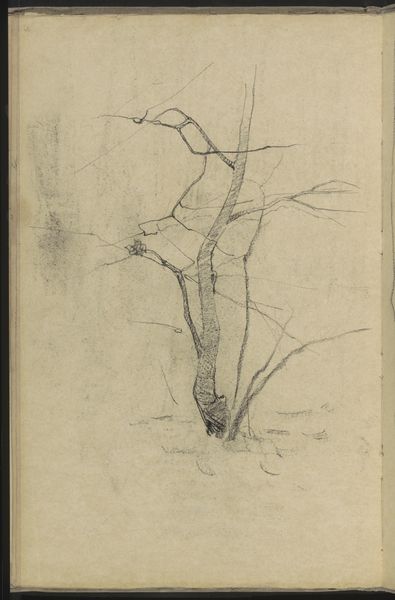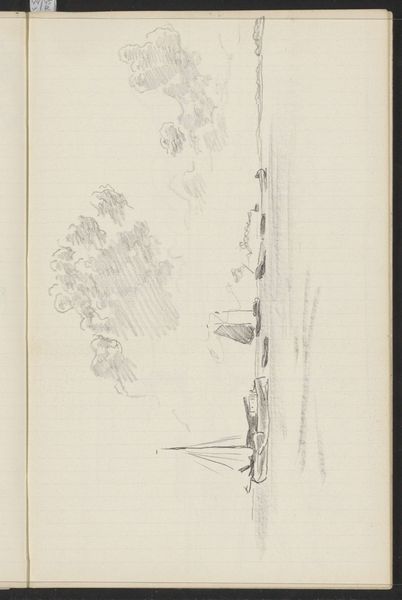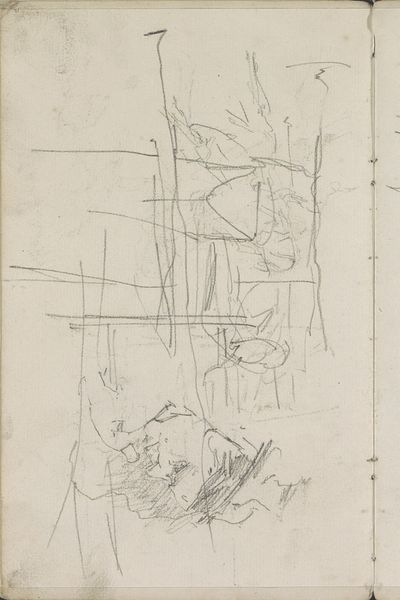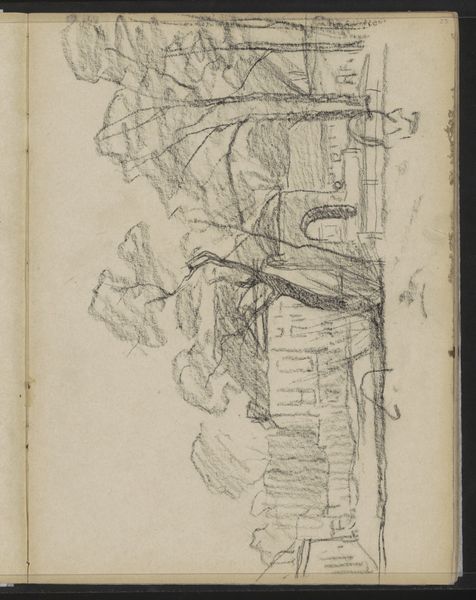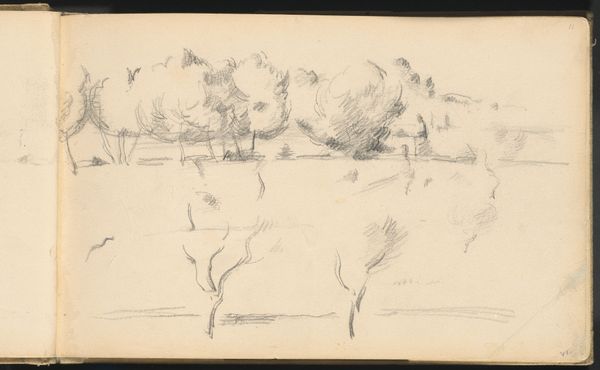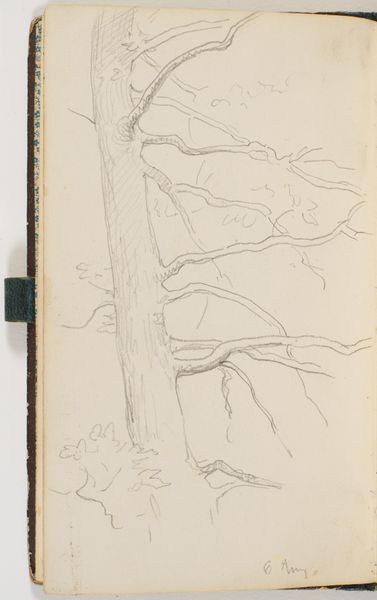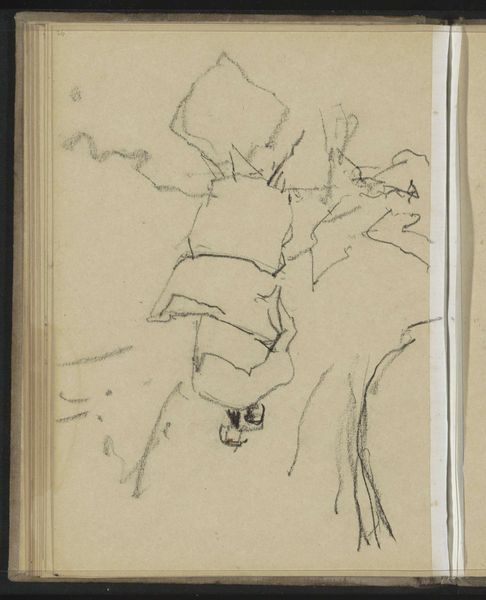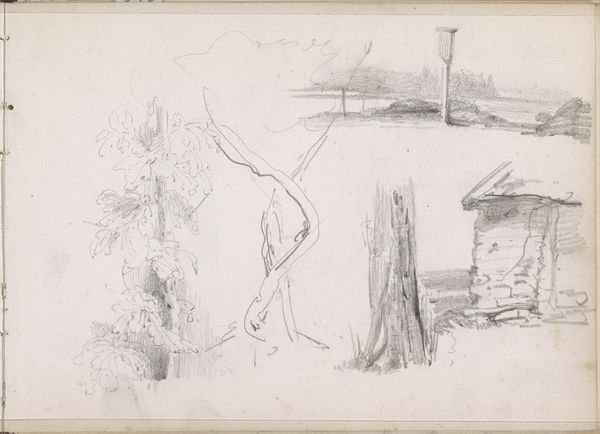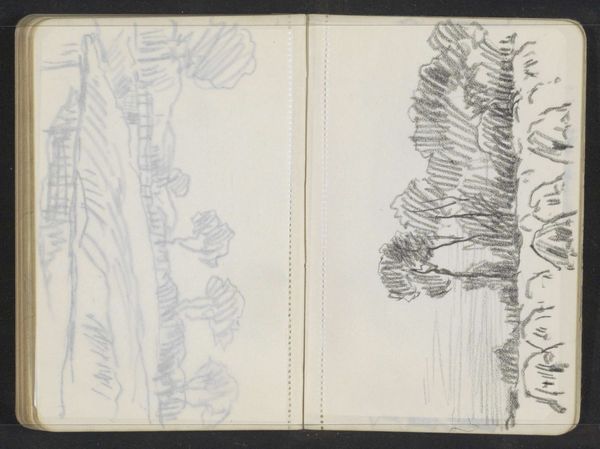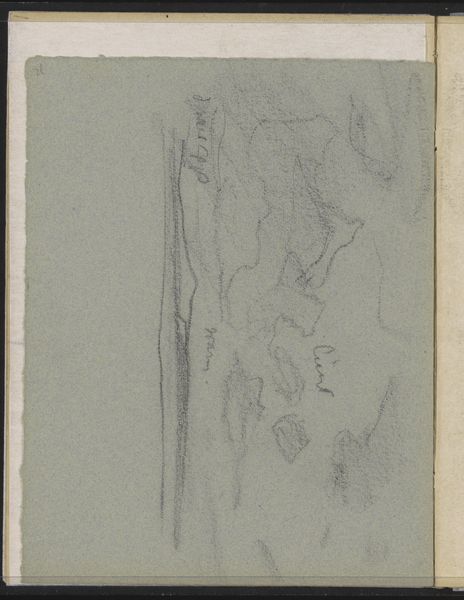
Copyright: Rijks Museum: Open Domain
Editor: Here we have "Boom," a drawing created between 1893 and 1897 by Willem Witsen, rendered in ink, graphite and pencil on paper. The skeletal lines of the tree are striking. What stands out to you about the composition? Curator: The starkness of line against the toned paper immediately captures the eye. Note how the artist utilized varied line weights – thick, assured strokes alongside delicate, almost tentative marks. Consider the visual tension created by the contrast of the densely packed lower branches against the more open, reaching upper limbs. Editor: It feels almost unfinished, like a quick study. Curator: Precisely. It functions more as an investigation of form and texture than a finished, polished depiction. Observe the structural logic within the branch formations – each line contributes to an understanding of spatial depth and the organic growth patterns, wouldn’t you agree? Editor: Yes, now I see it's less about capturing a perfect likeness and more about understanding the tree's essential form. How does the choice of materials play into that? Curator: Ink and graphite, direct and unforgiving mediums, allow for immediate mark-making, capturing the fleeting essence of observation. The restricted tonal range directs attention to the relationships between line, shape, and the void they create on the page. Ask yourself, what does this reduction achieve? Editor: It focuses my attention, guiding my gaze. I initially saw it as just a quick sketch, but now it speaks more to the raw, fundamental architecture of nature. Curator: Exactly. The genius is in Witsen’s paring down, in revealing structure through suggestion, rather than detailed rendering. I, too, am left pondering what seems 'unfinished' about the image. Editor: Thank you for guiding my gaze through the underlying artistry.
Comments
No comments
Be the first to comment and join the conversation on the ultimate creative platform.
